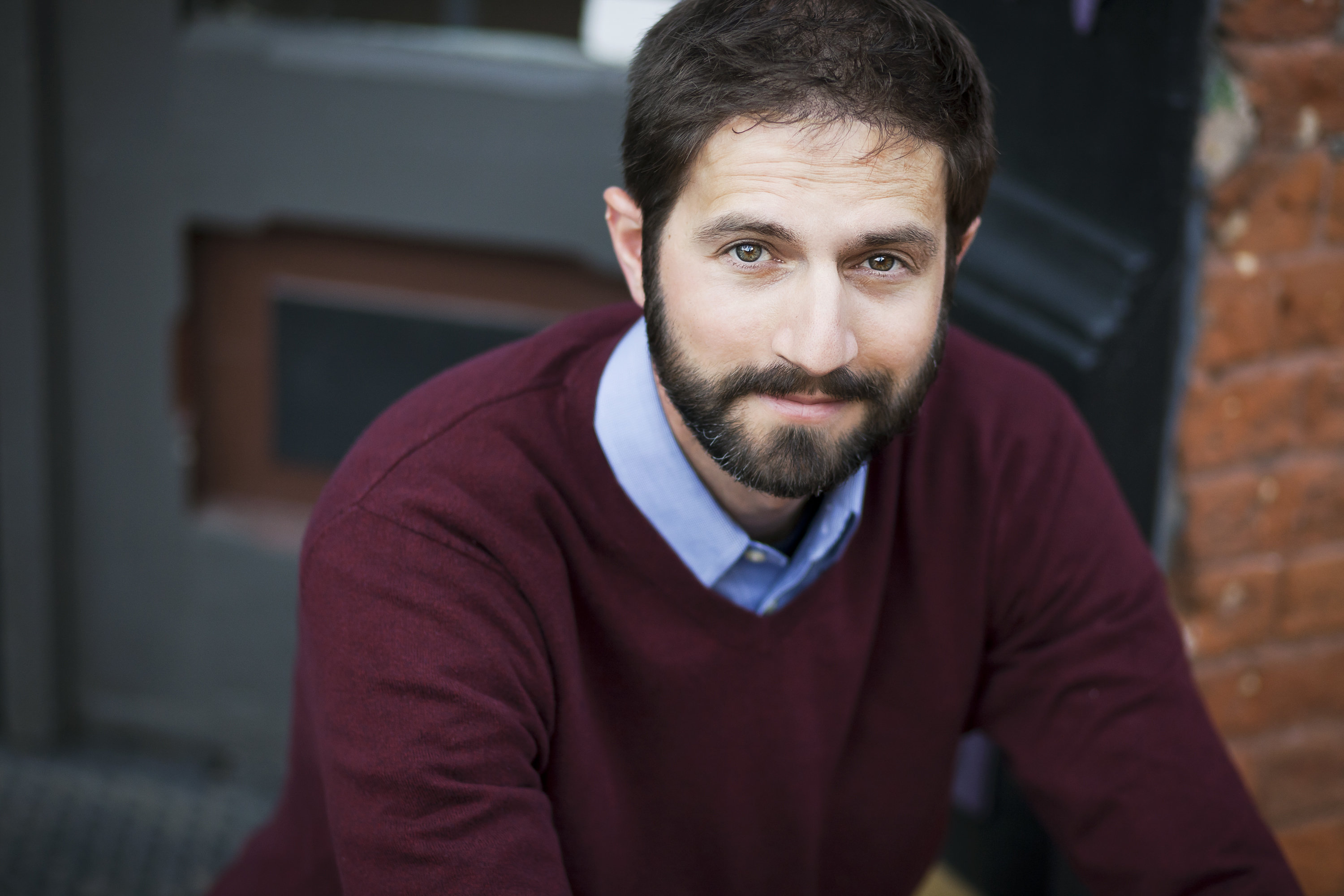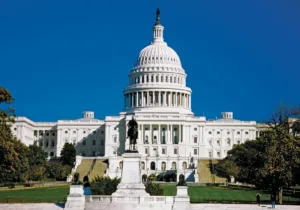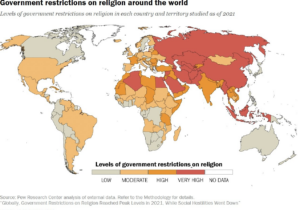This article about religious freedom first appeared in the Spring-Summer 2018 issue of Providence’s print edition. It was adapted from remarks delivered at the symposium “International Religious Liberty & Human Rights in the Trump Administration,” hosted by Providence on April 19, 2017, at the National Press Club. To read in a PDF format, click here. To receive full access to future issues as soon as they are available, subscribe here.
“This was the oath He swore to our father Abraham: To set us free from the hands of our enemies, Free to worship Him without fear, Holy and righteous in His sight All the days of our life.” The Canticle of Zechariah
The first clauses of the First Amendment to the US Constitution pertain to religious freedom. The Bill of Rights opens with these words: “Congress shall make no law respecting an establishment of religion, or prohibiting the free exercise thereof.”
To the extent the Constitution is our national scripture, there’s a temptation to read into that, to commit a kind of constitutional eisegesis, inferring from the textual primacy of religious freedom a political or philosophical primacy. And indeed, many today are in the habit of referring to religious freedom as our “First Freedom.” Thomas Curry’s 1986 book The First Freedoms is regularly cited in the Supreme Court’s church-state decisions. In 2007, the Department of Justice launched the “First Freedom Project” to step up enforcement of laws protecting religious liberty. And in 2012, PBS aired The First Freedom, a film that traces the history of religious freedom from an abstract idea to a legal right enshrined in our Constitution.
In reality, though, the “firstness” of the First Amendment is something of a historical accident. As originally proposed by Congress in 1789, the Bill of Rights contained twelve—not ten—amendments to the Constitution. The Rotunda of the National Archives in Washington, DC, houses the original document, and if you look closely at the faded yellow parchment, you’ll note that the clauses on religious freedom aren’t first. They are about midway down the page, situated—one might say relegated—beneath the heading “Article the third.”
Of course, the states at the time didn’t ratify the first two amendments. “Article the third” moved up two places to become “Amendment I.” The Religion Clauses became the First Clauses in the Bill of Rights. And the status of religious freedom has been elevated—at least in our political discourse—ever since.
In the present political moment, it’s worth asking whether this primacy of place is deserved. Here at home, we find religious freedom under threat. Indeed, the very concept is politically toxic. Abroad, we find it under assault, sometimes with deadly consequences. Is religious freedom still—indeed, was it ever—the First Freedom? Is it really a “core human right,” as the US Commission on International Religious Freedom maintains?[i] Or, is it an outdated constitutional aberration, an irrational preference for irrational belief systems impeding our progress toward greater secular enlightenment?[ii]
My intention in this essay is to defend religious freedom as the First Freedom. Not because it sits atop the Bill of Rights—if that were the reason, it would be little more than a “parchment barrier,” to use Madison’s famous phrase.[iii] Rather, religious freedom is “first” because it sits at the proverbial bottom, at the very bedrock of human rights—a truth borne out by history, philosophy, and practical experience. It’s critical that we understand these historical, philosophical, and practical reasons for prioritizing religious freedom because they help shape, and even reframe, how we think about religious freedom abroad. The essay closes with two lessons for US foreign policy.
Historical Seed of Freedom
The concept of civil rights—areas of liberty beyond the reach of state power—actually has its genesis in the early struggle for religious freedom. As Judge Michael McConnell and other scholars have noted, it was the Reformation theological tradition, starting with Martin Luther and John Calvin, that gave us the idea of “two kingdoms”: the spiritual and the civil, or church and state.[iv] These were distinct realms of authority over human affairs, each sovereign in its own right, and each inviolate as to the other. The civil realm was defined by the duty of man toward man (or man toward the state) acting under compulsion of law. But in the spiritual kingdom, the duty was to God alone, and man acted by the conviction of his own conscience. The spiritual, then, was a realm in which the state had neither power nor competence to interfere. The Reformers were fond of the maxim that civil law could never bind the conscience.[v]
The doctrine of two kingdoms was a theological idea, but its political implications were profound because it laid the groundwork for more general limits on government power. As Judge McConnell puts it, “such a conception of limits on the legitimate reach of the state is a necessary precondition to constitutionalism… Once limits are conceived in this way, it becomes possible to craft further limitations on the scope of governmental authority, in service of broader liberal ends.”[vi]
Two kingdoms theology implied not only that the church was separate from the state, but also that the individual was. For moderns at the cusp of 500 years of Western history, this may seem obvious, even intuitive. But it was not an inevitable development. For poignant contrast, read Thomas Hobbes’ chilling conception of the state as a “mortal god,” where individuals are mere subjects of an unpunishable sovereign.[vii]
Liberty of conscience became the vanguard of other civil liberties because it naturally implied them—the freedom to act, to speak, and to assemble with others in furtherance of one’s convictions. In this way, religious freedom was the historical seed for other kinds of freedom.[viii] And, by focusing attention on the individual conscience, early advocates of religious freedom helped shape our concept of the human person as a locus, or focal point, of rights.
Conscience, Our “First Law”
Philosophy, like history, attests to the primacy of religious freedom. Religion at its essence is one’s “sense of the absolute,” to use Reinhold Niebuhr’s definition.[ix] In Paul Tillich’s formulation, it is a person’s “ultimate concern.”[x] Religion is that fundamental human impulse to define oneself in relation to an ultimate or transcendent reality (however conceived), and it motivates the profoundest questions that occupy the human mind: Where did we come from? What is our destiny? And how shall we live now?
Just as the family is the first society in which we participate, so religion is often our first philosophy, a kind of primal “cosmology” that shapes our earliest ideas about God, man, and the world. Long before a child has a sense of law and government, she has a sense of God and moral obligation. To say that “conscience is the first law” is not only a theological truth, but also a chronological fact: human beings are actuated by religious duty long before they’re aware of the demands of civil society.
Religious freedom honors these deep impulses and fundamental truths about human nature. This is surely what James Madison had in mind when he wrote in his famous Memorial and Remonstrance that religious duty “is precedent, both in order of time and in degree of obligation, to the claims of Civil Society. Before any man can be considered as a member of Civil Society, he must be considered as a subject of the Governour of the Universe.” According to Madison, “every man who becomes a member of any particular Civil Society” does so “with a saving of his allegiance to the Universal Sovereign.”[xi]
Now, undoubtedly, Madison in 1785 was drawing from the well of Lockean social contract theory, but there’s a deeper intuition at work here. It’s captured, centuries earlier, in the Apostle Peter’s answer to the Jerusalem authorities: “We must obey God rather than men.”[xii] That idea—the conviction that religious obligation is primary and pre-political—is neither uniquely Western nor uniquely Christian. It is, rather, a common human impulse. It’s why religious freedom is not just a fundamental human right, but among the most fundamental of all human rights.
Cornerstone of Ordered Liberty
Besides the lessons of history and philosophy, there are practical reasons for prioritizing religious freedom. Religion matters, and it matters a lot to a lot of people. In the secular (and ever-secularizing) West, we tend to downplay religious motivations. We’re more comfortable with materialistic or political explanations for human behavior. But when we minimize religion in this way, we ignore not only an entire dimension of human experience, but a key driver of it.
It does not escape even a casual observer of current affairs that religious freedom and other kinds of freedom—like speech, press, and assembly—are fellow travelers. A growing body of empirical evidence confirms this essential link: societies that protect religious freedom tend to respect other civil liberties, too.[xiii] And this makes sense. Just as religious freedom historically opened the door to other kinds of freedom, so also denying religious freedom makes broader political restrictions easier to justify. It’s very hard, for example, to maintain a robust commitment to free speech and open democracy if citizens can be prosecuted for blasphemy.[xiv]
In this way, religious freedom acts as a bellwether for other civil liberties. If citizens can peacefully agree to disagree about religion, they can do the same with other ideas. If they can tolerate even harsh attacks on what they perceive to be the “true faith,” they can also put up with caustic discourse in politics, economics, the arts, and other subjects. This tolerance for social difference—a pluralist understanding of the common good—lies at the heart of the liberal order.[xv]
But the stakes are even higher than this. As Brian Grim and Roger Finke show in their book The Price of Freedom Denied, societies ignore religious freedom at their peril. Across the world, restrictions on religious freedom are a strong predictor of violent religious persecution and civil conflict. The converse is also true: higher levels of religious freedom mean reduced levels of religion-related violence. While other social factors do play a role, they don’t have the same explanatory power. Grim and Finke conclude that restrictions on religious freedom are the “Rosetta stone”—the master key—for understanding why violence and persecution persist in much of the world.[xvi]
Social science thus bears out what history and philosophy teach: in the quest for social justice, religious freedom is indispensable. It is a cornerstone of ordered liberty. Freedom of conscience—of belief and action—is the civic oxygen that allows other kinds of freedom, and even liberal democracy itself, to grow and thrive.
Two Lessons for US Foreign Policy
The term First Freedom is more than trite alliteration. It articulates deeper truths about religious freedom—its historical priority, its philosophical primacy, and its practical necessity. These are what make religious freedom unique and worth protecting. As I advocated above, to call religious freedom “First” is to describe not the pinnacle of human rights achievements, but the very foundation of them.
There are lessons to be drawn here, particularly for religious liberty abroad and the way we advocate for it. Two arguments are worth sketching, one that’s obvious and one perhaps less so.
First, the obvious: religious freedom must be a core objective of US foreign policy. Our experience in the West—now increasingly buttressed by social science data—is that religious suppression only ignites and fuels social conflict. But for much of the world, religious freedom remains a counterintuitive idea. Where we can, we should be advancing the truth that in diverse religious societies the political threat is not religion but the suppression of it.
Certainly we should be advancing this truth in places where religious freedom is under greatest attack, like in the Middle East, Russia, and China. But neither should we be silent when our staunchest allies take wrong turns. In France, for example, the legal ban on the Muslim headscarf in certain public places is profoundly wrongheaded. If secularism is a social ideal, it’s justifiable only when it creates a level playing field for people of all faiths to pursue happiness and live out the convictions of conscience. But secularism is indefensible when it sidelines people of faith and disqualifies them from public life. In this sense, state-imposed secularism and hard-nosed Islamism share much in common, and the United States should be equally critical of both. When it comes to religious freedom, being a faithful witness means being a fair one.
The second, less obvious lesson is this: history and theology matter. We cannot be effective advocates for religious freedom abroad unless we understand the unique historical and theological trajectories of nations.
Take the United States for instance. In the late eighteenth century, we were primed for religious freedom. Fully two-thirds of the population at the time hailed from a non-Anglican “dissenting” religious tradition, and a majority of these had a Calvinist theological orientation.[xvii] Calvinism predisposed early Americans to think of church and state as distinct “jurisdictions” and to extol liberty of conscience as a social and political ideal. Both ideas were later enshrined in the Religion Clauses of the First Amendment, which decoupled state and ecclesiastical power (“disestablishment”) and prohibited government from coercing the consciences of religious people (“free exercise”).[xviii]
The unique theological history of the United States raises two sets of questions that demand our attention. The first set is conceptual, even academic. Could the American Revolution have happened—was it even possible—without the Protestant Reformation two centuries earlier? Could religious freedom, and broader concepts of liberty, have taken root in the United States without the influence of Reformation theology and its public exponents like Presbyterian minister John Witherspoon, Madison’s preceptor at Princeton?[xix]
The second set of questions is more practical: in light of our unique American heritage, can we expect other countries to be committed to religious freedom in the same way we are? For philosophical and practical reasons, the answer is surely yes. But our own historical experience of religious freedom should invite some introspection about our advocacy for it elsewhere in the world. Yes, we must be committed to religious freedom as good policy and a core human right. At the same time, we should be attentive to the particular theologies and histories—the unique cultural traditions—that nurture societies outside the West. We need to be mining the resources of those traditions and elevating those aspects that are most conducive to freedom.
This process may parallel, but will not duplicate, the American experience. In mainstream Islamic theology, for example, there is nothing like the Reformation doctrine of “two kingdoms.”[xx] Our challenge in the West is to be sensitive to the way that two kingdoms theology has shaped our own ideas about religious freedom, and to seek out—or at the very least, support others who seek out—an authentically Islamic basis for religious freedom.[xxi] The same could be said for other great organizing religious principles, like Confucianism, Buddhism, and Hinduism in East and South Asia.
If religious freedom is to flourish, it needs deep roots. Philosophical and practical arguments may water the tree of liberty and help it grow. But to endure, freedom must be planted in the rich soil of theology, history, and culture. To put it another way: if we’re going to be effective advocates for religious freedom at the international level, we need to treat religious freedom as truly “First”—building it up from its historical, theological, and pre-political foundations, not imposing it from the top down in the form of a Western value. For religious freedom to thrive throughout the world, it needs to be an indigenous product, not an American export.
Religious freedom and foreign affairs have always been inextricably linked. Indeed, for seventeenth-century European dissenters, religious freedom was possible only because they fled their homelands for distant American shores. Madison, too, thought of religious freedom in international terms. His Memorial and Remonstrance continues to echo across the centuries for its prescience. In it, he likened the American stance on religious freedom—for good or for ill—to a “Beacon on our Coast.” Protection of religious freedom “promised a lustre to our country,” he said, by “offering an Asylum to the persecuted and oppressed of every Nation and Religion.”[xxii] Let us pray the United States remains ever true to that noble heritage.
Ian Speir is a First Amendment attorney and a Senior Advisor for Human Rights at In Defense of Christians.
[i] U.S. Commission on International Religious Freedom, “Who We Are/What We Do,” uscirf.gov.
[ii] See, e.g., Micah Schwartzman, “What If Religion Is Not Special?” University of Chicago Law Review 79, no. 4 (2012): 1351; Suzanna Sherry, “Enlightening the Religion Clauses,” Journal of Contemporary Legal Issues 7, no. 2 (1996): 473, 485; Steven G. Gey, “Why Is Religion Special? Reconsidering the Accommodation of Religion Under the Religion Clauses of the First Amendment,” University of Pittsburgh Law Review 52 (1990): 75, 176.
[iii] James Madison, Letter to Thomas Jefferson, Oct. 17, 1788, founders.archives.gov.
[iv] Michael McConnell, “Why is Religious Liberty the ‘First Freedom’?” Cardozo Law Review 21 (2003): 1243; Robert Joseph Renaud and Lael Daniel Weinberger, “Spheres of Sovereignty: Church Autonomy Doctrine and the Theological Heritage of the Separation of Church and State,” Northern Kentucky Law Review 35 (2008): 67.
[v] See John Calvin, Institutes of the Christian Religion, bk. III, chap. 19, sec. 16.
[vi] McConnell, supra note 5, 1247.
[vii] See Thomas Hobbes, Leviathan (New York: Touchstone, 1962), 132-36.
[viii] McConnell, supra note 5, 1255-56.
[ix] Reinhold Niebuhr, Moral Man and Immoral Society (Kindle Edition, 1935), loc. 831.
[x] Paul Tillich, Christianity and the Encounter of the World Religions (New York: Columbia University Press, 1963), 4.
[xi] James Madison, Memorial and Remonstrance Against Religious Assessments (1785), press-pubs.uchicago.edu.
[xii] Acts 5:29 (English Standard Version).
[xiii] Brian Grim & Roger Finke, The Price of Freedom Denied: Religious Persecution and Conflict in the Twenty-First Century (Kindle Edition, 2011), loc. 4988-95.
[xiv] See Paul Marshall, “When Blasphemy Runs Amok,” Providence, May 1, 2017, providencemag.com.
[xv] McConnell, supra note 5, 1258-59.
[xvi] Grim and Finke, supra note 14, loc. 2140.
[xvii] Renaud and Weinberger, supra note 5, 81.
[xviii] Renaud and Weinberger, supra, note 5, at 83; McConnell, supra note 5, at 1246.
[xix] See, e.g., Ian Speir, “The Calvinist Roots of American Social Order: Calvin, Witherspoon, and Madison,” Public Discourse, Apr. 13, 2017, thepublicdiscourse.com.
[xx] M. Cherif Bassiouni, Remarks, in “Speech, Religious Discrimination, and Blasphemy,” American Society of International Law Proceedings 83 (1989): 427, 433. “[Islamic law] reflects a holistic conception of life, government, law and hereafter. There is no division of church and state; there is no division between matters temporal and religious.”
[xxi] See, e.g., Abdullah Saeed, “Making the Islamic Case for Religious Liberty,” Hudson Institute, Mar. 1, 2017, hudson.org; Mohammad Hashim Kamali, “Freedom of Religion in Islamic Law,” Capital University Law Review 21 (1992): 63; see also Asifa Quraishi-Landes, “Islamic Constitutionalism: Not Secular. Not Theocratic. Not Impossible,” Rutgers Journal of Law & Religion 16 (2015): 553.
[xxii] Madison, supra note 12.







 Sponsor a student for Christianity & National Security 2024
Sponsor a student for Christianity & National Security 2024